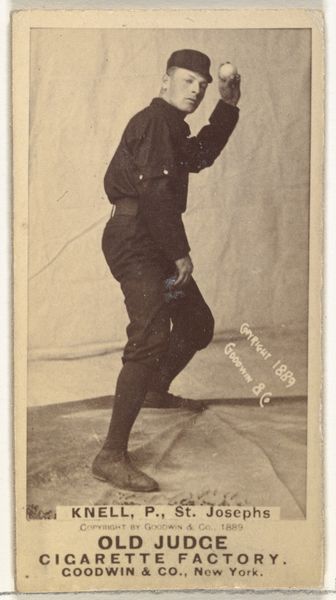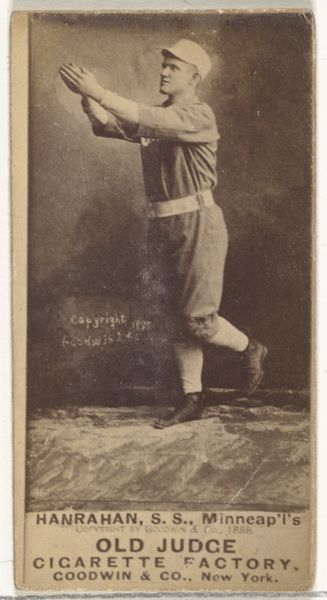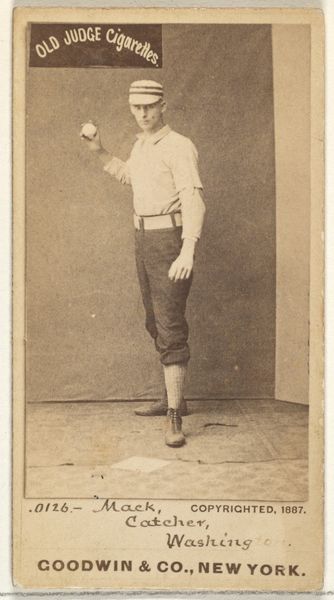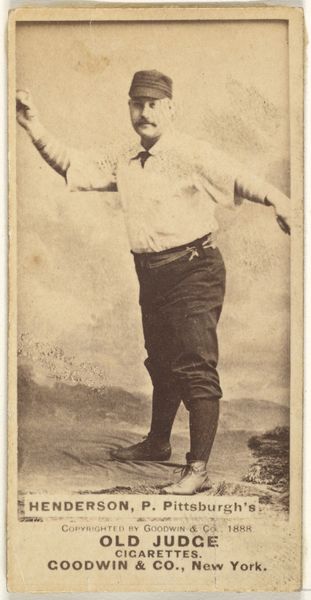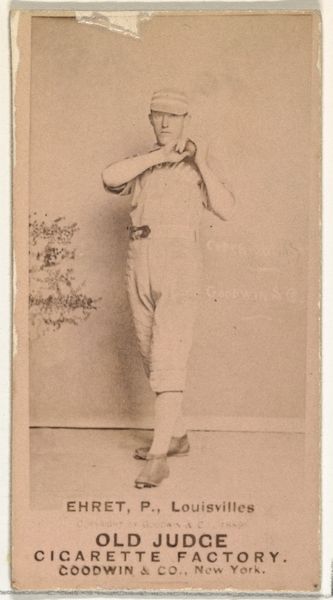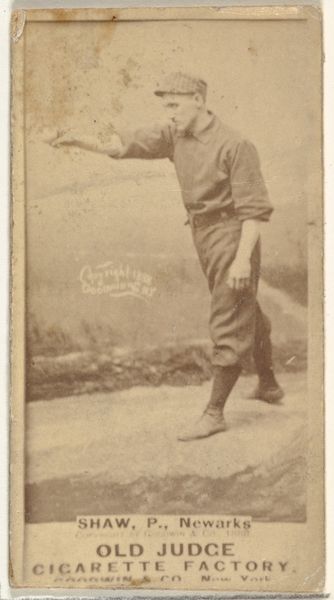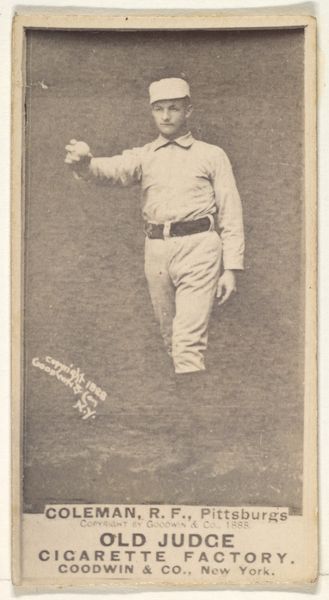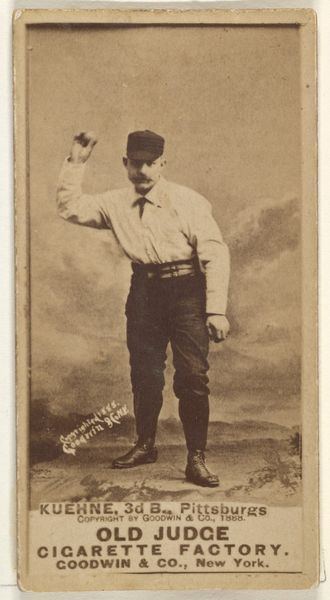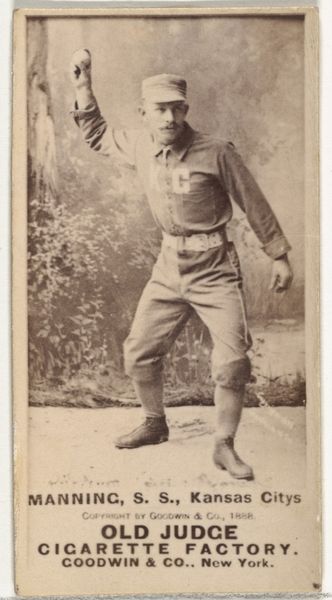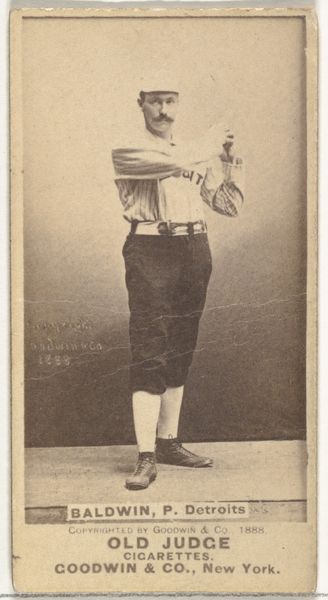
Samuel E. "Sam" Barkley, 2nd Base, Kansas City Cowboys, from the Old Judge series (N172) for Old Judge Cigarettes 1888
0:00
0:00
drawing, print, photography
#
portrait
#
drawing
# print
#
baseball
#
photography
#
men
#
athlete
Dimensions: sheet: 2 11/16 x 1 3/8 in. (6.9 x 3.5 cm)
Copyright: Public Domain
Editor: This is an 1888 trading card of Samuel E. "Sam" Barkley, a baseball player for the Kansas City Cowboys. It's from the "Old Judge" series by Goodwin & Company. Given the nature of the medium and what the picture depicts, I find myself pondering baseball's place in American society during this period. What is your take on this photograph and what does it tell us about this time? Curator: Think about it as commodity, cleverly masked as portraiture. It’s not simply about commemorating an athlete. This card circulated to increase the appeal of Old Judge Cigarettes. The labor required to produce it, from the players training and the photographer staging this scene, to the factory workers printing these images en masse for insertion into cigarette packs, it speaks volumes about burgeoning industrial capitalism. Editor: So, it's more about consumerism than art? Curator: Precisely! Look at the stark text announcing "Old Judge Cigarette Factory". Goodwin & Co.'s "art" relies entirely on its place as a driver of commerce. What was seemingly made for the love of the sport has been crafted to build up profit and cultural habits around a specific commodity – the cigarette. It's a really innovative interplay between the visual culture and capitalism! Editor: That shifts my understanding of the image drastically. The image of a baseball player that I immediately associated with traditional values is only serving as an incentive. Now I see it's also linked to advertising tobacco, mass production, and consumption. Curator: Indeed! Examining the intersection of art and labor reveals the complex socioeconomic forces at play, challenging idealized notions about creative pursuits. What do you think now, looking at the figure's raised arm with a baseball in his hand? Editor: Now I view it more skeptically. It's not so much a sign of athletic ability and aspiration, but the hand of capitalism. I see the act of advertising, plain and simple. I find the transformation of cultural objects into items of exchange quite jarring. Curator: Exactly! That’s what thinking about material conditions can reveal about these everyday objects that we think we understand completely at first glance.
Comments
No comments
Be the first to comment and join the conversation on the ultimate creative platform.

